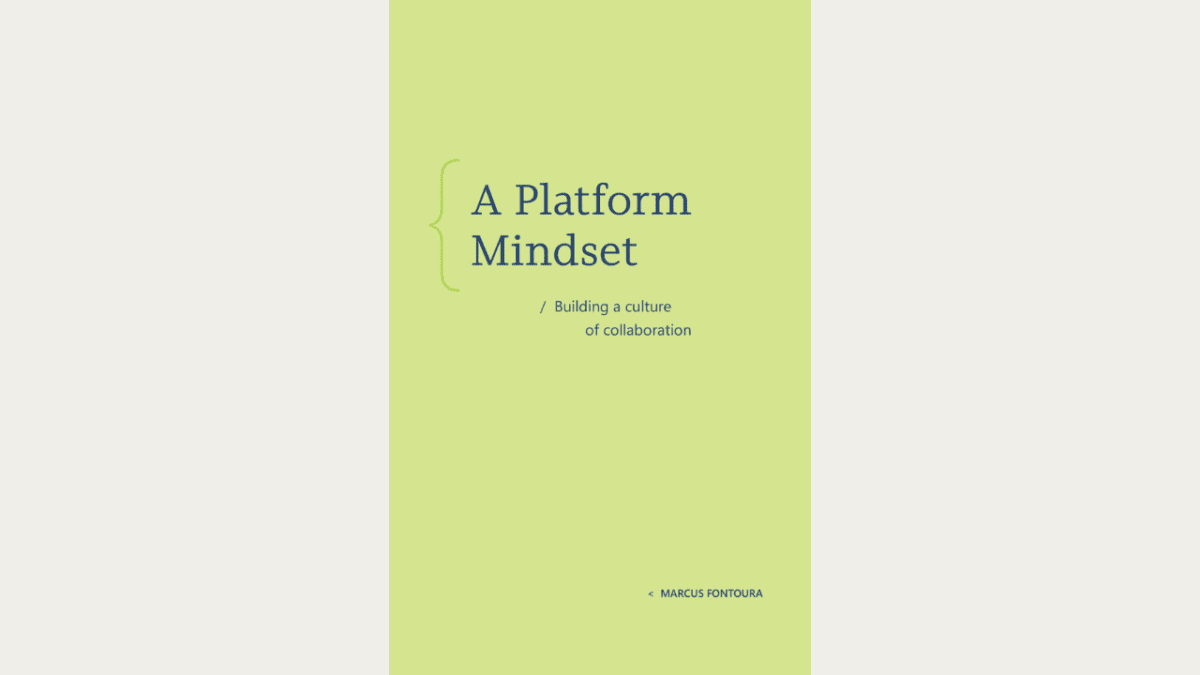In this digital age, creating an environment that values innovation and creativity is essential if companies hope to maintain a competitive edge. But how can companies enable and encourage teams to let their creativity flourish, make mistakes, learn from them, and produce transformative innovations? It demands both an ethos of experimentation and a structural system that supports it.
Marcus Fontoura has spent more than 20 years in big tech companies and has been at the forefront of industry-shaping technology innovations, from computational advertising to cloud computing to fintech. His new book, A Platform Mindset: Building a Culture of Collaboration, shares how companies can expand and scale processes that empower teams to solve their own problems, collaborate across functions, and bring about competitive advantages.
1. Satya Nadella, CEO of Microsoft, says his book focuses on what matters most in this digital age — inclusive workplaces where creativity and innovation solve complex customer problems. What do you see as the main challenges in actually achieving this kind of environment?
The biggest challenge is reconciling speed with depth, creating space for inclusive dialogue and long-term thinking while delivering results in fast-moving environments. In large organizations, silos and legacy incentives can inhibit collaboration. To overcome this, leaders need to intentionally shape systems that reward knowledge sharing, not just individual output.
A Platform Mindset argues that without mechanisms for alignment and reuse, even the most talented teams will fall into local optimizations that fragment innovation. Inclusion is not just about who is in the room — it’s about whether ideas can travel across boundaries.
2. In your experience, what is the importance of creating an environment that values innovation and creativity within organizations? How do you go about building this at Stone?
Innovation thrives in environments where people feel safe to take risks and are empowered to own problems end-to-end. At Stone, we focused on building this through a culture of intentionality. That means aligning people, processes, and platforms around clear missions and outcomes. We moved from a project-based model to platform teams that see themselves as enablers for others. We also established strong feedback loops — celebrating small wins, learning from incidents, and opening space for creative problem-solving.
As I share in the book, a culture of innovation is less about slogans and more about architecture, both technical and organizational.
3. In your book, A Platform Mindset, you talk about building a culture of collaboration. Why do you think standardized systems and engineering tools are so important for addressing technical challenges and fostering collaboration in large enterprises?
Standardization reduces friction. When teams operate on common interfaces, shared observability tools, and coherent documentation practices, it becomes dramatically easier to collaborate across boundaries. But it’s not just about efficiency — it’s also about psychological safety.
When engineers know what to expect from the environment, they can focus their creativity on the real challenges rather than navigating institutional complexity. The platform mindset is about seeing infrastructure not as a constraint, but as a catalyst for innovation. You build systems that empower teams to solve their own problems while benefiting from shared investment and learning.
4. Balancing rapid innovation with the need for secure and reliable services is tricky, especially in fintech. How do you approach this tension?
You can’t bolt on reliability and security after the fact — they need to be part of the platform from the start. At Stone, we made platform teams accountable not only for enabling innovation but for ensuring guardrails and resilience. That means everything from rate-limiting APIs to auto-enforcing compliance rules in CI/CD pipelines. We also emphasized observability — if you can’t see the system, you can’t trust it.
The key is to treat reliability and security as accelerators of innovation, not barriers. Done right, they provide the foundation that allows teams to experiment and iterate without fear.
5. Your new book is aimed at managers, students, and technology professionals. How can A Platform Mindset help them develop their careers and navigate the challenges of today’s tech landscape?
This book offers more than principles — it offers playbooks. For managers, it provides tools to grow talent, foster alignment, and scale collaboration. For students and early-career professionals, it demystifies how modern tech organizations operate and shows how to be effective beyond code, through empathy, architecture, and curiosity.
In a world where technology evolves faster than org charts, A Platform Mindset helps readers focus on what endures: how to build with others, how to share context, and how to turn complexity into leverage.
6. Finally, looking ahead, what do you hope readers — and the industry as a whole — take away from your book?
I hope readers come away with a deeper understanding that great systems — and great careers — are not built in isolation. The future belongs to those who can collaborate across functions, disciplines, and perspectives.
A Platform Mindset is a call to rethink engineering not just as problem-solving, but as platform-building: shaping the environment where others can thrive.
If we want to solve the complex challenges of our time, such as climate, equity, and digital inclusion, we need systems that compound human ingenuity. My hope is that this book helps more people contribute to building those systems.
Learn more on the website.

